On Breech Seating There is at least a hint that something happens during the leap of the bullet from the case neck to the chamber that reduces accuracy. Breech seating the bullet is suggested as a method of eliminating the leap and accuracy reduction. It has been noted that the .22 rimfire can exhibit supurb accuracy, and that the heeled groove sized + bullet is sort of breech seated. Years ago we loaded rifles from the muzzle and were able to shoot very accurately. The introduction of the breech loader speeded up the shooting and reduced the fouling problem, but didn't do much for accuracy. A succession of gunsmiths and shooters, typified by Harry Pope, worked on the accuracy problem, and arrived at three solutions. First and most succesfull was the jacketed bullet, which seems unaffected by the leap. Next was the breech-muzzle loading method, where the bullet was pushed through a false muzzle and down the bore to a certain location; after which the loaded cartridge case was put in the chamber and the gun fired. This worked, produced great accuracy, but had enough problems that the method eventually disappeared. Last and still widely used today was breech seating, with the bullet pushed into the chamber end of the barrel, followed by the loaded cartridge and firing. Breech seating involves pushing the bullet into the chamber and rifling, so there are four design elements that interact: chamber design, bullet design, bullet hardness and breech seating tool mechanical advantage. A chamber designed around the bullet reduces breech seating effort. A bullet designed around the chamber reduces breech seating effort. Harder bullets are harder to breech seat. Many breech seaters are simple pushers, yet some breech seaters have enough mechanical advantage to seat a steel bullet. Chambers vary from SAAMI to precisely throated designs for a specific bullet. Bullets were, for a century or more, flat nosed multi band= multi groove tapered base-band Pope style. Pointed noses were known to cause inaccuracy. More recently some brave shooters have adopted bullets with pointy noses and fewer bands, and are shooting accurately. Single shot guys, breech seaters, tend to the belief that only tin and lead are correct bullet metals, and delight in talking about the relative merits of 20 to 1 vs. 30 to 1 vs. 23.6 to one alloys. They keep well away from harder alloys, because the force required to breech seat increases fast as bullet hardness increases. Most single shot guys breech seat with a simple pusher, sometimes seating with a plugged case and an Stevens 44.5 or Ballard action or another action exert force on the plugged case to seat the bullet. He use of involved levering breech seaters is, at least in my experience, less often seen. Chambers can be designed around certain bullets, rifle chambers can be throated, but I prefer to use guns with production chambers. Better accuracy may require more machine time, but very good results can be achieved with modern production chambers. Bullets can be and have been designed for breech seating, by accident. Some old designs work fine breech seated. The 311299, 314299 and 31141, properly sized, can be breech seated in about any .30 caliber rifle. This is simple, the nose should engrave and the band should seal the bore. With the band sized for the rifle's chamber, it does a fine job of sealing the bore and the combination of the band end and nose align the bullet. The trick here is that the bullet DOES NOT have to go in the chamber so the base is ahead of the case mouth-the case mouth can go around the bullet base. While the mathematical relationship between bullet hardness, chamber pressure and accuracy, what I call the “Davis/Harris/Lee myth”, has been solidly disproved; there is the fact that harder bullets shoot better fast than do softer bullets. Soft bullets are thought to be needed to breech seat, limiting velocity to somewhere around 1500 fps. But, we don't need to use soft bullets to breech seat, we need correctly designed bullets seated as far BACK as just gets the band to seal the bore. Could we breech seat linotype bullets and shoot them fast? We don't need a Rube Goldberg seater, the bullet can be pushed into the chamber with a plugged open mouthed case that sticks it into the chamber. An hour and even I can make one. Or, a clever machinist could make a case with a solid inside step at the appropriate location, and that would allow “fixed breech seating.”
BREECH SEATING NOTES
- 8K Views
- Last Post 16 December 2014
” Many breech seaters are simple pushers, yet some breech seaters have enough mechanical advantage to seat a steel bullet.” ????????? I have actually BSed a modern jacketed bullet. By the time it got into the rifling it was deformed. "Bullets were, for a century or more, flat nosed multi band= multi groove tapered base-band Pope style. Pointed noses were known (?) to cause inaccuracy. More recently some brave shooters have adopted bullets with pointy noses and fewer bands, and are shooting accurately." Very few, if any current record is held with a flat nosed bullet. The old wifes tail that spitzers degrade accuracy, is just that, a wifes tail! Most currently used spiters have a ~4 caliber ogive. I've heard of bullet slump for a long time but, even with soft (30/1) I've not experianced it with a bullet that's tapered and has a ogive ending at bore size or larger. " Chambers can be designed around certain bullets, rifle chambers can be throated, but I prefer to use guns with production chambers. Better accuracy may require more machine time, but very good results can be achieved with modern production chambers. Bullets can be and have been designed for breech seating, by accident. Some old designs work fine breech seated. The 311299, 314299 and 31141, properly sized, can be breech seated in about any .30 caliber rifle. This is simple, the nose should engrave and the band should seal the bore. With the band sized for the rifle's chamber, it does a fine job of sealing the bore and the combination of the band end and nose align the bullet. The trick here is that the bullet DOES NOT have to go in the chamber so the base is ahead of the case mouth-the case mouth can go around the bullet base. While the mathematical relationship between bullet hardness, chamber pressure and accuracy, what I call the “Davis/Harris/Lee myth”, has been solidly disproved; there is the fact that harder bullets shoot better fast than do softer bullets. Soft bullets are thought to be needed to breech seat, limiting velocity to somewhere around 1500 fps. But, we don't need to use soft bullets to breech seat, we need correctly designed bullets seated as far BACK as just gets the band to seal the bore. Could we breech seat linotype bullets and shoot them fast? We don't need a Rube Goldberg seater, the bullet can be pushed into the chamber with a plugged open mouthed case that sticks it into the chamber. An hour and even I can make one. Or, a clever machinist could make a case with a solid inside step at the appropriate location, and that would allow “fixed breech seating.” "
Most of the above is just speculation. A well designed BSer will always be superior to a case installed bullet because of the way the pressure can be applied. Rube Goldberg, implys that there are more features than needed. I can't remember seeing a BSer like that.
Frank
Attached Files
Hey Joe, you calling my breech seater a Rube Goldberg? Oh well, it needed a name anyway.........
Attached Files
After I wrote that I wondered how many of us remember Rube.Where do you shoot? Me, Trail Glades in Miami.
Attached Files
A well designed BSer will always be superior to a case installed bullet because of the way the pressure can be applied.
Show me the data Frank, show me the data.
Attached Files
Joe,The data is in my targets. Untill you can show results as good or better that that, you'll have to concede :) ASSRA and ISSA have a lot “data” regarding mechanical BSers I've shot 10 groups at 200 yards in the last year at matches of 1.44, 1.35, 1.8 and many in the ~2.0 range average. I just shot a 1.6 and 2.0 in practice, last week with a new bullet. I've also shot a .463 200 yard, 5 shot group last June at a match. Show me some “stuff” like that and I'll believe you. Frank
Attached Files
Joe,The data is in my targets. Untill you can show results as good or better that that, you'll have to concede :) ASSRA and ISSA have a lot “data” regarding mechanical BSers
I've shot 10 groups at 200 yards in the last year at matches of 1.44, 1.35, 1.8 and many in the ~2.0 range average. I just shot a 1.6 and 2.0 in practice, last week with a new bullet. I've also shot a .463 200 yard, 5 shot group last June at a match.
Show me some “stuff” like that and I'll believe you.
Frank
Frank,
I don't want to be argumentative but you apparently haven't followed what CBA shooters have been doing. The performance with fixed ammunition in custom benchrest rifles has been at least equal to the breech seater class.
The records for ten shot AGGREGATES at 200 yards are 1.04 and 1.03 for heavy and UNR. It is even 1.61 for production class. Needless to say shooting four in a row is quite different from the occasional best groups fired.
However, comparing either records or occasional groups isn't the best way to compare. Joe has compiled the average ten shot aggregates shot at 200 for the last 15 CBA nationals. Both heavy and unrestricted classes have shot better than breech seater class almost every year. There is more than one way to skin a cat.
John
Attached Files
The point was, Joe is suggesting something w/o proof regarding BSing, case Vs mechanical. There is NO data to support what he is suggesting. None of my groups are records, they are just what I've been shooting this year in matches and can be expected with my rifle. I can get the ASSRA records for you to compare with the CBA records, if you want. They were all shot BSed.
I do know the basic accuracy of the Heavy, Unp, and Unr clases and I know the basic margins between the PB and those clases. The accuracy of those classes isn't in question, how to best get BS type accuracy was.
” The records for ten shot AGGREGATES at 200 yards are 1.04 and 1.03 for heavy and UNR. It is even 1.61 for production class. Needless to say shooting four in a row is quite different from the occasional best groups fired. "
The records as stated above can not be expected from people that shot them at any given time so, I fall to see what is relavent about them.
If you don't want my input in this thread, I'll but out.
Frank
Attached Files
I understood you the first time around Frank. Mech vs modified cartridge. You were clear as day.
Can you highlight some of the ways that a mechanical seater works better than a modified cartridge? Just the basics. Ive not used either, never breech seated before. Id like to try though.
Mike
Attached Files
<user=3>joeb33050 wrote: After I wrote that I wondered how many of us remember Rube.Where do you shoot? Me, Trail Glades in Miami. Just came back from Markham Park. Tried Goodsteel's Breech Seater for the first time. See attached. PS. I'd love to come down to Miami and shoot with you. Been plowing through your CD for years, still find new stuff. BTW the attached was shot with my target rifle in 30 XCB (30x57), built by Goodsteel (Malcolm Ballistic Tool). Shilen Match barrel, 30 1/2".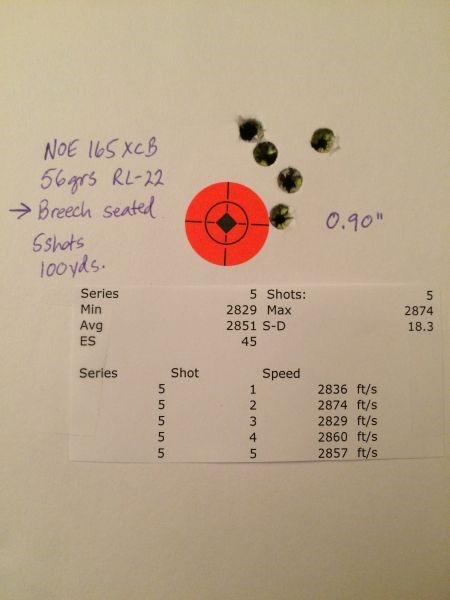
Attached Files
<user=1362>corerf wrote: I understood you the first time around Frank. Mech vs modified cartridge. You were clear as day. Can you highlight some of the ways that a mechanical seater works better than a modified cartridge? Just the basics. Ive not used either, never breech seated before. Id like to try though. Mike When I started Schuetzen back in 1985, I didn't have a BSer that used mechanical leverage to install the bullet. That particular rifle had what was called a 32/40 Schuetzen chamber. The case was straight tapered w/o any neck and at the end of the all they have is a 30 deg angle down through the lands. A very simplistic chamber. I built a inline seater for it (Pictured) and shot a tapered spitzer bullet with .004 being the difference between the base and front driving band. It was a very accurate rifle with a #4 size Douglas barrel. It would shoot best with 30/1 soft bullets, because they could be installed with one midium effort push. The harder the alloy the worse the fliers. A few years later, I throated it wth a .322 freebore and 1 deg leade and it did better with harder bullets and it took less effort to BS them. It also made it more consistant with less fliers. It's still a competitive rifle today. I've tried harder alloys in it, up to Lyman #2 but, I had to use a mallet to drive them in. Each strike deformed the base and bands and I would get from just OK accuracy to fairly large fliers. I also got a few very good group but, nothing I could be sure that could be repeated. I see three problems with Joe's case: 1. The bullet can't be started into the throat straight and has to rely on the throat to do that, after it starts into it. With a BSer, The BSer guilds the bullet, already aligned into the throat. You have that same type problem with “plug case” BSing but, you have a tapered bullet to help. I don't know any top shooters in the West that use that system. 2. If you have a good tight bullet to throat fit, (using harder alloys) so that it can't gas cut, you'll have to have more force than can be generated with just your hand and the bolt handle. This means that you either have to bump it with you hand or other object or rig a mechanical system like bjornb uses with a push rod to the bolt handle. 3. Using a case or machined case you won't be able to get the bullet, fully into the throat, because the bullet must be some distance inside the case and the case can't be in the chamber further than the end of the chamber neck. Besides the simple push type seater pictured in this reply, I'll post a few others that I have made and some done by others. Your only limited by your ingenuity. Frank
Attached Files
last one but, there are many more styles. I can post more if anyone wants more ideas.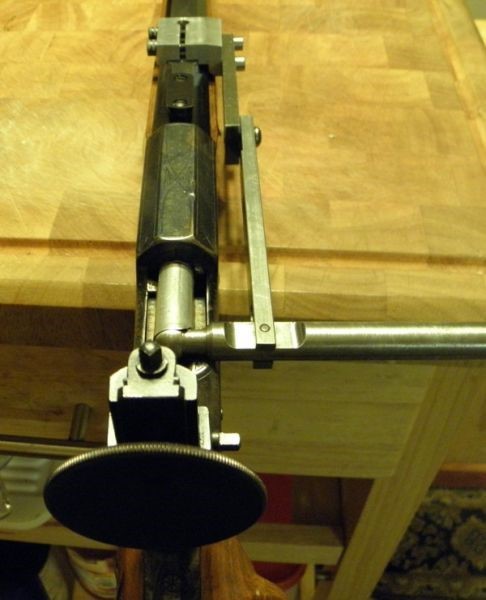
Attached Files
Here's the deal. Frank wrote this: A well designed BSer will always be superior to a case installed bullet because of the way the pressure can be applied. I can read, and this sentence is about a comparison. I asked for the comparison data., “well designed breech seater” vs. “case installed bullet". Frank, either show us the data, or retract what you said. This is about improving accuracy in cast bullet shooting, it's not a debate and it's not about who's the smartest guy in front of a computer. If you want to fight, go to another thread.
Attached Files
For some reason I wake up in the middle of the night with dredged up memories.An 1882 Maynard #16 in 32-35 came to me in 1991. I made cases and searched for a bullet. After some sulfur casts, a few impact forgings and a couple of tries at a Hoch mold, I had a mold that worked.It breech seated with a plugged case, locking/ closing the barrel, but that was far from an elegant solution.Next was an adjustable breech seater case, the case with the screw and nuts visible. This adjusts for seating depth, and pushed the bullet in with great force required. Bob Carow sketched a breech seating lever for a Maynard in my notebook at a Florida match, and I ginned one up, still a lot of force and a third hand was required. Somewhere in here I cut a twig off a tree and put it in a case, whittled away. That's the case standing up. With the very same twig.That case is the bullet pusher inner. For about a zillion shots I dropped a bullet in the chamber, pushed the twig case in to thumb refusal, put a charged case in the chamber AROUND the bullet, and shot the gun. This is an iron sight only gun, no scope blocks, that was my favorite offhand gun when proving that I can't shoot well offhand. This gun and loading technique was and is quite accurate, although I'm sorta shaky. So here's a second gun that works breech seating so the case goes around the breech seated bullet. And, I think I've got a 45-70 that works/worked the same way.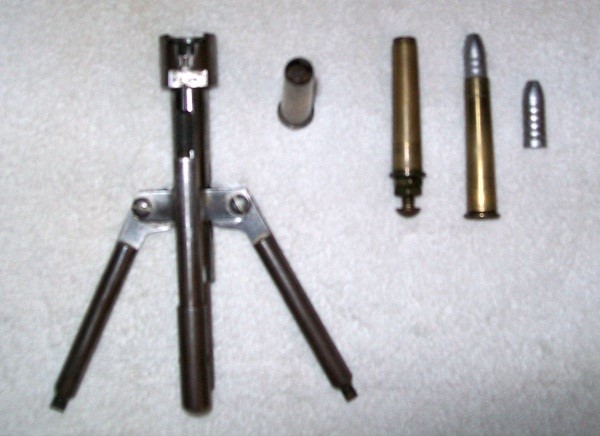
Attached Files
I didn't understand about the “not bore rider” business and guess I need to see the chamber drawing. I've studied the bullet drawing and your posts on the NOE site.If you can reliably shoot under 1” groups at 100 yards at these velocities, then we should stop talking about breech seating and 22 rimfire and such, because you've broken the code for beating the wind-this is, maybe, the .5” hurdle defeater. Tell us more, tell us it all.Thanks;joe b.After I wrote that I wondered how many of us remember Rube.Where do you shoot? Me, Trail Glades in Miami.
Just came back from Markham Park. Tried Goodsteel's Breech Seater for the first time. See attached.
PS. I'd love to come down to Miami and shoot with you. Been plowing through your CD for years, still find new stuff.
BTW the attached was shot with my target rifle in 30 XCB (30x57), built by Goodsteel (Malcolm Ballistic Tool). Shilen Match barrel, 30 1/2".
Attached Files
I don't keep “wallet” groups but I kept this, the smallest 45-70 group I've ever shot, .693” it says. 100 yards, breech seated by pushing the bullet in the chamber with a dowel, then putting the charged case in around the bullet. This was in 1992, C. Sharps Mod 1875, I still have the rifle. I bought the borrowed mold from Bob Bross, it lived with Ken for a while and it's back home now. So, here are 3 guns that shoot reasonably well with the bullet breech seated partly-all would work with a step-necked case. It can be done. But, should it?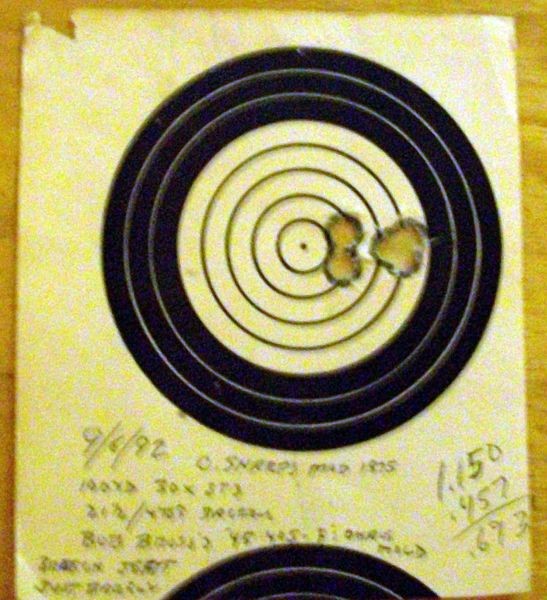
Attached Files
The point was, Joe is suggesting something w/o proof regarding BSing, case Vs mechanical. There is NO data to support what he is suggesting. None of my groups are records, they are just what I've been shooting this year in matches and can be expected with my rifle. I can get the ASSRA records for you to compare with the CBA records, if you want. They were all shot BSed.
I do know the basic accuracy of the Heavy, Unp, and Unr clases and I know the basic margins between the PB and those clases. The accuracy of those classes isn't in question, how to best get BS type accuracy was.
” The records for ten shot AGGREGATES at 200 yards are 1.04 and 1.03 for heavy and UNR. It is even 1.61 for production class. Needless to say shooting four in a row is quite different from the occasional best groups fired. "
The records as stated above can not be expected from people that shot them at any given time so, I fall to see what is relavent about them.
If you don't want my input in this thread, I'll but out.
Frank Frank, First -- I apologize. I had no intent to offend. I have reread your post and see that I misunderstood it. When I read “a case installed bullet” I thought you meant fixed ammunition which is certainly a case installed bullet but I see what you meant. Sorry that this post is late I didn't check the forum last night.
I certainly don't want you to take your ball and go home. Your posts are always interesting and I appreciate your participation.
I agree that records aren't the best way to assess what accuracy is possible on a regular basis and thought I made that clear in my post. They are no better than citing the good groups we fired in the last season and not mentioning averages. That's why I mentioned Joe's attempt to show a more useful comparison of scores. Joe's approach isn't perfect either but better than citing records or individual good days.
John
Attached Files
Categories
- All Categories
- General Polls
- Contact Us w/ Forum Issues
- Welcome to The Cast Bullet Association Forum
- General
- Bullet Casting
-
Guns and Shooting
- AR Platform
- TC Contenders & Other Single Shot Handguns
- Shotguns
- Informal Matches & Other Shooting Events
- Gunsmithing Tips
- Gun Cleaning & Maintenance
- Optics
- Benchrest Cast Bullet Shooting
- Military Bench Rest Cast Bullet Shooting
- Silhouette Shooting
- Postal Match Cast Bullet Shooting
- Factory Guns
- Black Powder Cartridge
- Hand Guns
- Lever Guns
- Single Shot Rifles
- Bolt Action Rifles
- Military Surplus Rifles
- Plinkers Hollow
- Muzzleloaders
- Hunting
- Reloading
- Buy, Sell or Trade
- Other Information & Reference
Search
This Weeks High Earners
-
John Carlson 22
-
 linoww
17
linoww
17
-
 Bud Hyett
15
Bud Hyett
15
-
drone 9
-
MP1886 7
-
beltfed 6
-
Lucky1 6
-
 RicinYakima
5
RicinYakima
5
-
mashburn 4
-
beemer 4




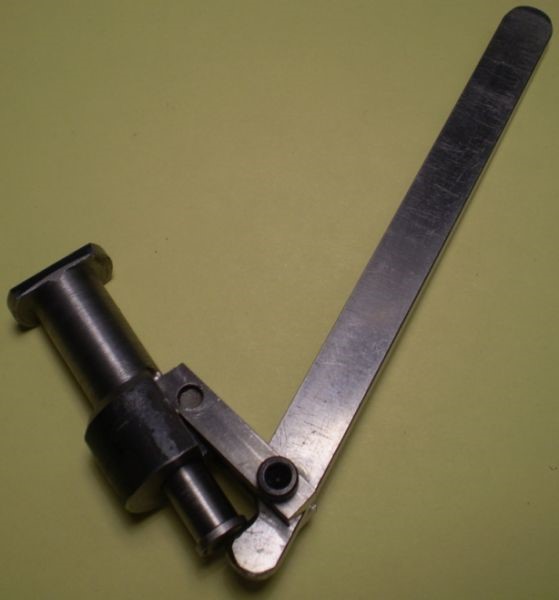
 more
more